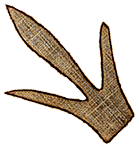 MENU
MENU
 MENU
MENU

This illustration accompanied Hitchcock's article in the American Journal of Science. It shows variouos sizes of "ornithichnite" tracks in proportion to each other. Image courtesy of Archive.Org.
It was Silliman who first took Deane seriously: the marks in the plaster casts did indeed look like bird tracks. However, Deane was a stranger, and Silliman could not risk his journal’s reputation by publishing so unusual a claim without reassurance. He asked Hitchcock, his former protege and now colleague, to take a look.
When Hitchcock saw the sandstone slabs with his own eyes, it was quite a surprise: Deane was right! What else could the marks be but bird footprints? But Hitchcock knew that traces of birds had never been found so far down in the geological record. Had there been birds on Earth much earlier than geologists thought? If so, this was a truly intriguing and important discovery!
Hitchcock became consumed by this extraordinary puzzle. How could these footprints have been formed and preserved? More to the point, what kind of creature made them? He searched quarries and town sidewalks for more specimens, pored over the most recent scientific literature about rock and fossil formation, and looked for the footprints of living birds and other animals so he could compare them with the imprints in stone, some of which were far too large to have been made by any living bird.
He was slower than Deane to definitely attribute the marks to extinct birds, but when he did, he thought that he had enough proof to convince his scientific colleagues.
He wrote his first article on this topic for the American Journal of Science, working carefully but with intense speed. Correspondence between Edward and Silliman flew back and forth all through the summer and fall and right past Christmas as they planned the layout and illustrations. Hitchcock called this new science ornithichnology, from Greek roots meaning the “study of fossil bird traces.” A short form of the word, ichnology, applies also to other kinds of organic traces, such as worm burrows and other animal tracks.
Finally, in January 1836, Edward Hitchcock’s first paper on the subject of the ornithichnites was published in the American Journal of Science. It was an original American discovery now on the international stage, and the two American scientists waited in anticipation to hear what the lofty membership of the Geological Society of London thought of it.
 One Creature, Many Tracks: Track Diversity
One Creature, Many Tracks: Track Diversity
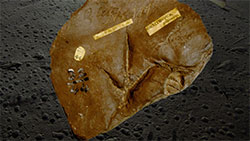 The Mystery of the Backward-pointing Toe
The Mystery of the Backward-pointing Toe
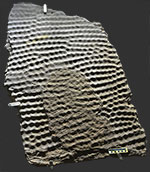 Fossil of Water Ripples
Fossil of Water Ripples
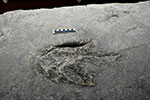 Fossil Eubrontes Track
Fossil Eubrontes Track
 Fossil Track Illustration, Orra White Hitchcock
Fossil Track Illustration, Orra White Hitchcock
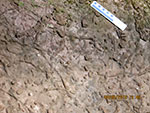 Fossilized Worm Burrows
Fossilized Worm Burrows
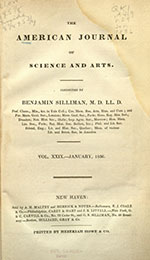 "Ornithichnology—Description of the Foot marks of Birds", American Journal of Science, January 1836
"Ornithichnology—Description of the Foot marks of Birds", American Journal of Science, January 1836
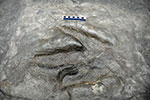 How Paleontologists Study Dinosaur Footprints
How Paleontologists Study Dinosaur Footprints